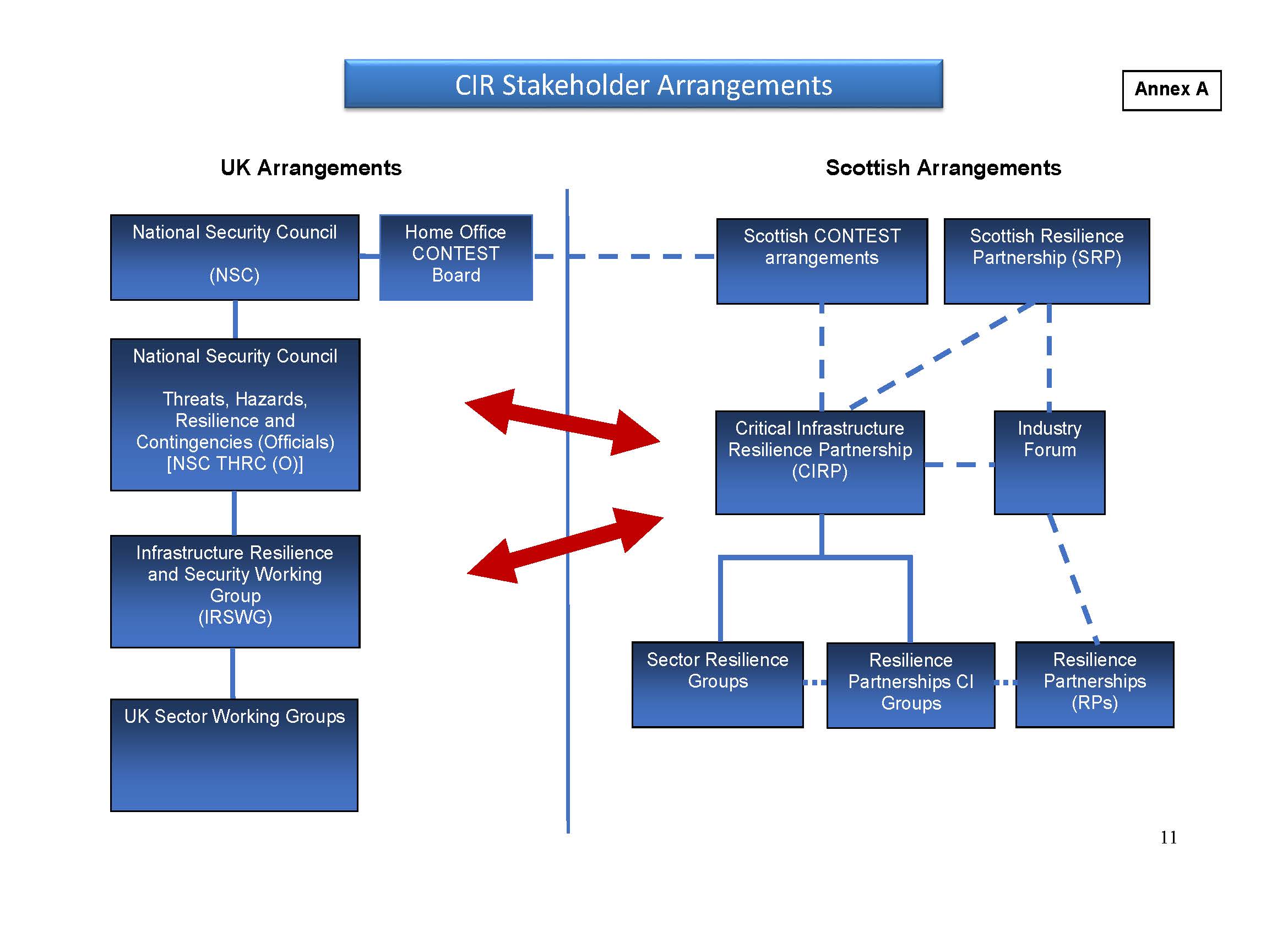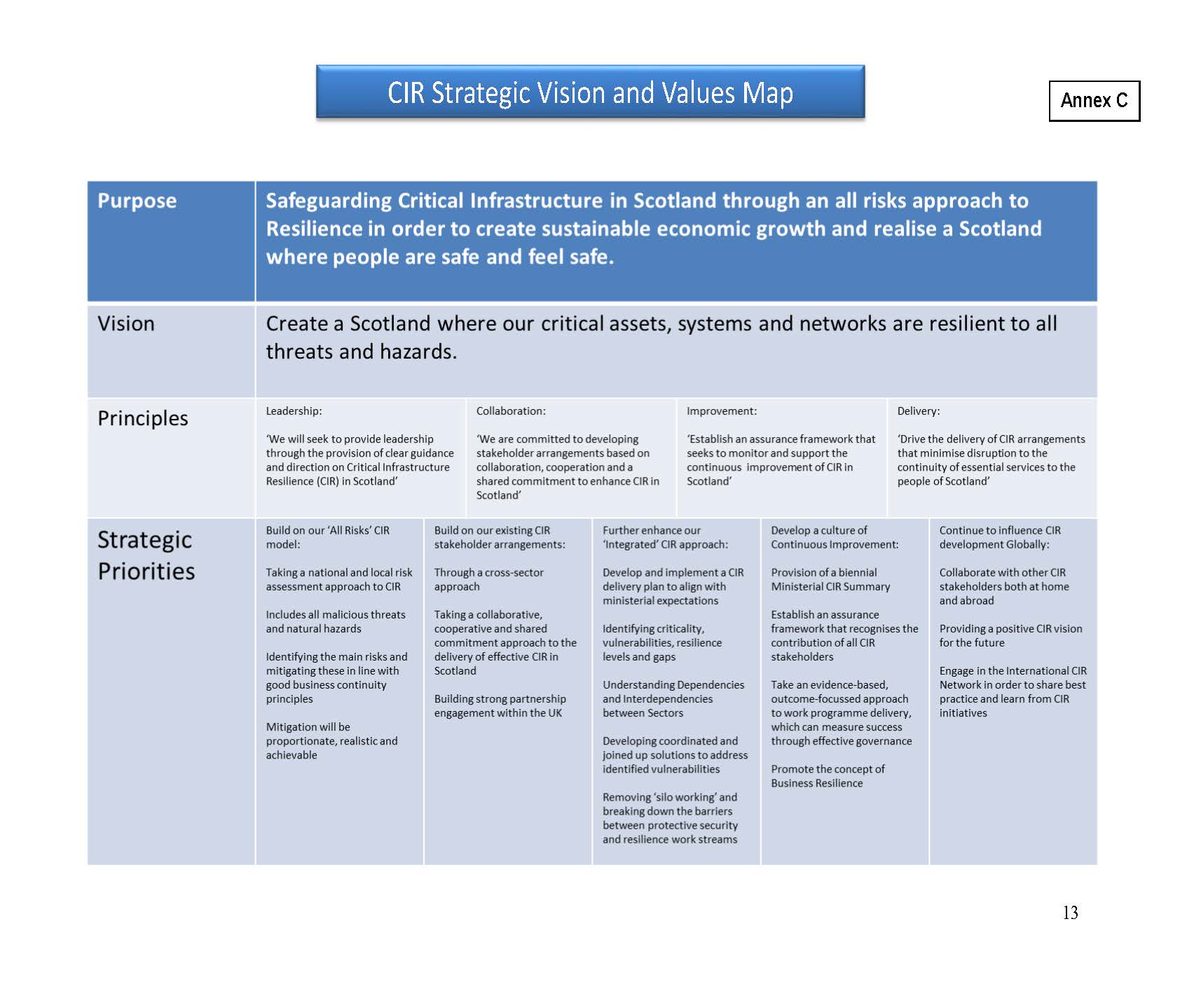Introduction
The ‘Keeping Scotland Running’ Guidance Suite seeks to support the delivery of Scotland’s Critical Infrastructure Resilience (CIR) Strategy. It aims to provide operational guidance and advice for Policy Leads, Responders and Operators on key issues identified during consultation with key CIR stakeholders in Scotland, the UK and abroad. The Guidance Suite comprises seven separate guidance documents designed to equip and enable CIR stakeholders to work together in order to build resilience across the critical infrastructure sectors in Scotland.
Purpose and Format
The guides have been written and prepared in a common format for ease of reference. The intention is that stakeholders can refer to individual guides where the subject matter is of relevance to their needs. In turn, this will assist stakeholders in the development of common policy and best practice. The guides are designed to fill the gaps in existing guidance and to supplement existing business processes and industry guidance used by organisations to build resilience across their sectors. The guidance is not intended to duplicate or conflict with existing UK Government Critical National Infrastructure (CNI) work streams or other regulatory requirements in the area of critical infrastructure resilience.
Overview of the Guides
Guide 1 Critical Infrastructure Resilience (CIR) Stakeholder Collaboration
To encourage and enable effective partnership working and information sharing on critical infrastructure so that information is shared with the right people at the right time, identifying interdependencies and understanding vulnerabilities is improved, effective mitigation and response is delivered.
Guide 2 Identifying Significant Local Infrastructure
To set out practical approaches that can be used to identify significant local infrastructure, in order to inform the resilience preparedness assessment process and contribute to achieving the long term resilience of significant infrastructure through better understanding of Physical, Logical and People assets at a local level.
Guide 3 Dependencies and Interdependencies
To outline practical approaches that can be used to assess dependencies and interdependencies at site specific, regional and sector level, thus gaining a better understanding of vulnerabilities, impacts on other infrastructure and consequences when things do go wrong, which in turn will realise the benefit of more effective and proportionate mitigation action and multi-agency response to disruptive events.
Guide 4 Cyber Security and Critical Infrastructure
To establish a common cross-sector approach to Cyber Resilience and Critical Infrastructure and includes information on the key risks for Scotland, the impact that these may have on infrastructure, as well as information on the resources and support available to organisations.
Guide 5 Resilience to Natural Hazards
To establish a common cross-sector approach to building resilience to Natural Hazards through integration into existing collaborative risk management and planning processes, which are reviewed, and monitored to engender continuous improvement.
Guide 6 Building Resilience to a Changing Climate (Adaptation)
To provide relevant information to those responsible for critical infrastructure in Scotland to help build resilience to the impacts of the changing climate through, retrofitting existing infrastructure, adding redundancy into infrastructure networks, reducing future mitigation costs, use of more efficient technologies and ensuring that infrastructure organisations and professionals have the necessary skills and capacity to implement adaptation measures.
Guide 7 CIR Continuous Improvement Model
To establish a common cross-sector approach to continuous Critical Infrastructure Resilience (CIR) improvement in Scotland to realise the benefits that common standards, assessment and monitoring bring to the drive for enhanced organisational resilience.

CIR Process Map
National Risk -> Assessment -> Scottish Risk Assessment -> CIR Continuous Improvement Approach -> Scottish CI Plans -> Ministerial CIR Summary
CIR Strategic Vision and Values Map






